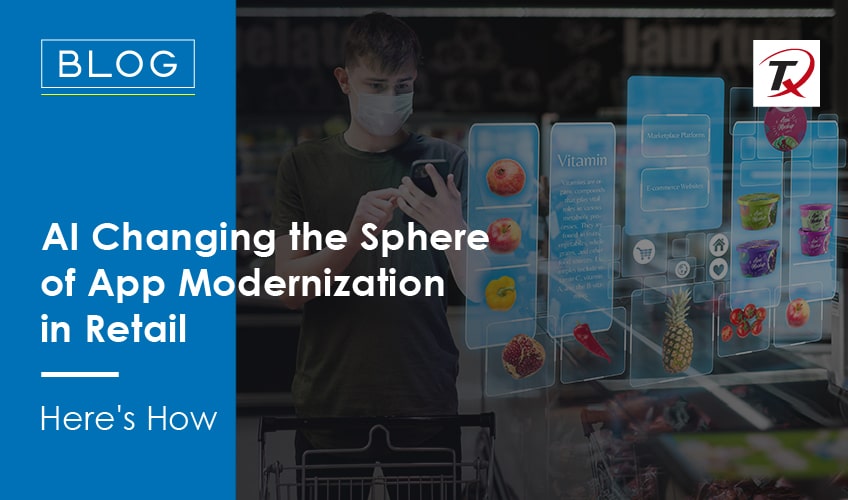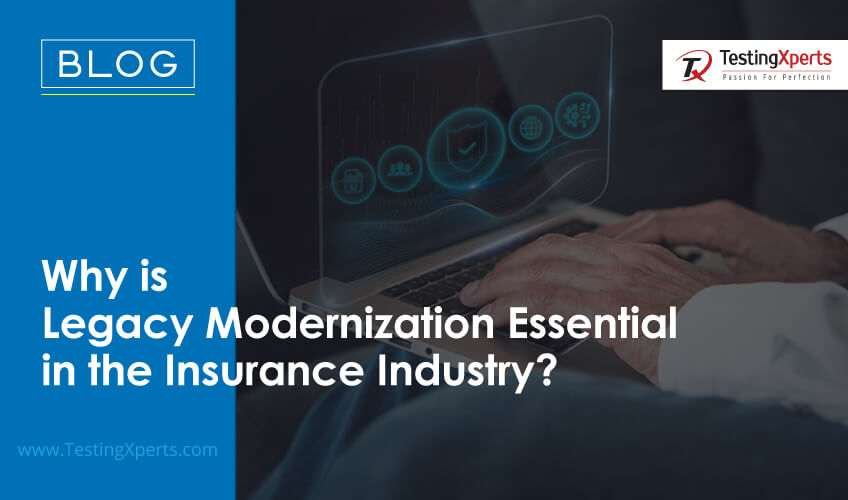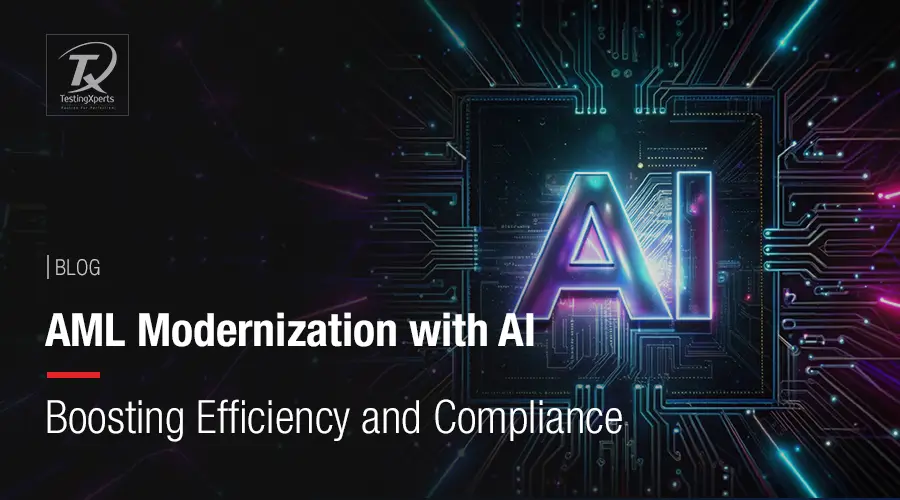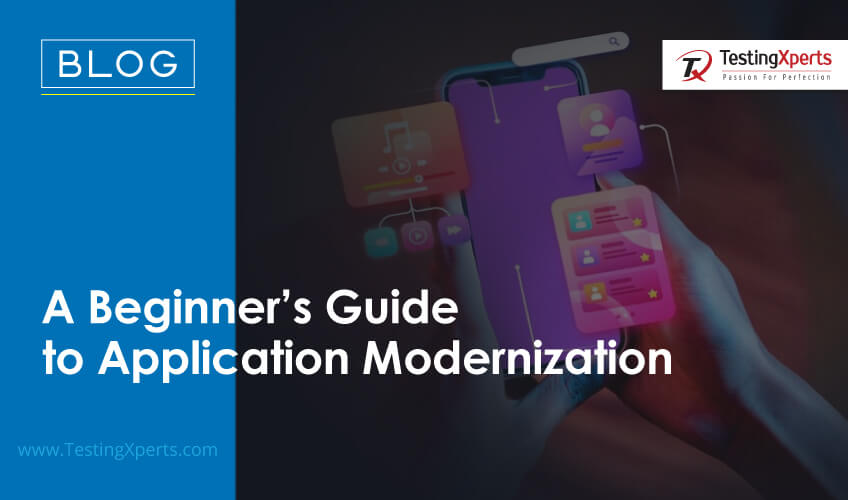
Table of Contents
- Why is App Modernization Required?
- Three key tenets of successful app modernization
- Elements to Include When Planning a Modernization Initiative
- Choosing the Right Application Modernization Approach
- Future Trends in Application Modernization
- How Testing Plays its Role in App Modernization?
Organizations across diverse sectors are undergoing significant transformations to thrive in today’s rapidly evolving digital landscape. IT is playing a pivotal role by facilitating the delivery of exceptional customer experiences, fostering a continuous cycle of innovation, and swiftly adapting to dynamic shifts in the marketplace.
But to enable digital business, you need to transform your approach to the apps that are at the core of your operations. Only then can you respond quickly to customer needs and deliver at the speed of ideation.
Modernization entails the process of reshaping existing software by adopting an agile development approach that encompasses people, procedures, and technology. It involves embracing cloud-native development practices, such as microservices and containerization, seamless integration with hybrid cloud solutions, and the implementation of agile and DevOps methodologies. Additionally, modernization necessitates a re-evaluation of the approach to application services, with the aim of turning it into a potent catalyst for driving innovation.
Why is App Modernization Required?
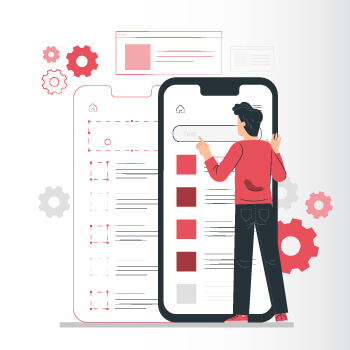
Every application modernization approach offers a common set of core benefits: diminishing the on-premises infrastructure to lower associated expenses related to networking, computing, storage, and backup; cutting costs and enhancing cost predictability; and elevating agility, velocity, scalability, security, and dependability. These advantages enable the establishment of a highly adaptable and continuously operational IT environment, empowering organizations to concentrate on expanding their core operations and introducing novel, innovative products, rather than being preoccupied with IT concerns.
Application modernization helps organizations move away from the conventional development approach characterized by extended-release cycles and isolated functions. It ushers them into a contemporary operational paradigm where IT aligns seamlessly with business objectives, automation is standard practice, and application releases occur significantly faster. Through application modernization, organizations can shift from the slow process of multi-week deployments to ones that transpire within a matter of days or even hours.
Three key tenets of successful app modernization
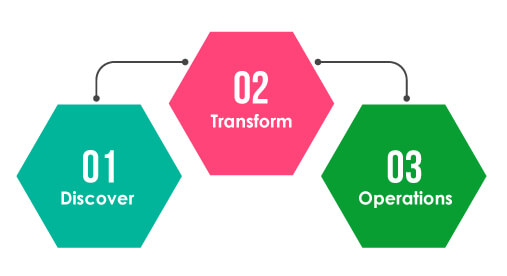
Application modernization guarantees your capacity to execute with speed, remain agile in response to ever-changing market dynamics, and proactively shift towards new business models, positioning you ahead of your competitors.
Discover:
Discovery, which includes how to build the roadmap and business case for modernization by understanding your current status.
Transform:
Transformation centers on the process of rearchitecting applications to harness the advantages of digital agility. Its fundamental transformation pillars encompass the adoption of cloud-native approaches, maximizing the potential of APIs, transitioning to agile and DevOps methodologies, and utilizing POD-as-a-Service (POD) models. This exploration of transformation encompasses three key aspects: architecture, technology, and organizational structure.
Operations:
This includes a discussion of how to optimize and scale for maximum agility and cost savings following modernization.
How to Strategize App Modernization
Understand your objectives:
To commence, it is essential to conduct a comprehensive assessment of the entire landscape, determining what aspects require modernization and which approaches are most suitable. It’s crucial to grasp the necessity for parallel transformations in people and processes alongside technological advancements to maximize the returns on investments. This can be achieved by implementing practices such as adopting agile and DevOps methodologies, transitioning to product-centric delivery models, and embracing cloud-native solutions. Building flexibility into the strategy and adopting a strategic approach to innovation are critical elements for effectively addressing evolving customer and market demands.
Elements to Include When Planning a Modernization Initiative

Begin with an assessment:
It can be a big task to “see” everything in the IT enterprise but understanding what’s in the portfolio goes side by side with a strategy. An assessment will give you an in-depth understanding of the current IT landscape and provide the critical information that will form the basis for a strong business case and an outcomes-oriented roadmap. Gaining visibility into your application portfolio can help identify the buckets of strategic decisions needed, from cloud strategy to consolidation. It should include analysis across multiple dimensions, including application portfolio, infrastructure, costs, cloud and digital readiness, and resource allocation. It helps identify what to consolidate, eliminate, replace, or modernize, as well as where to invest in the future. By aggregating data into an analytics platform, it’s possible to group apps across themes to drive stability and velocity – for example, grouping by criticality, problem volume, risk, and cloud suitability.
Creating a Modernization Roadmap
Creating a modernization roadmap is a critical phase in any application modernization journey. It serves as a detailed plan that outlines the steps, milestones, and timelines required to achieve modernization goals. A well-crafted roadmap factors in the chosen modernization approach, the current state of applications, and the desired end-state. It should also consider organizational readiness, resource allocation, and budget constraints. A thoughtful roadmap not only guides the execution of the modernization project but also provides stakeholders with a clear vision of what to expect throughout the journey. It serves as a dynamic document that adapts to evolving circumstances and ensures that the modernization project aligns with business objectives, ultimately leading to a successful and seamless transformation of the application landscape.
Choosing the Right Application Modernization Approach
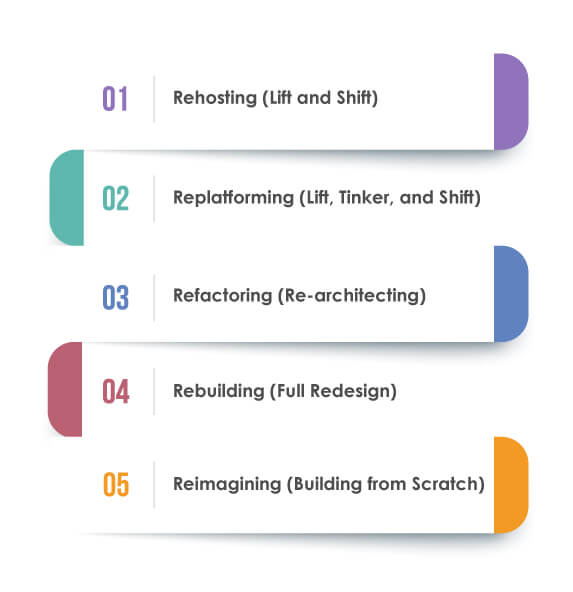
Application modernization involves a range of strategies, each tailored to specific goals, constraints, and circumstances. Selecting the right approach is critical for the success of your modernization project. Here, we delve into five common modernization approaches:
1. Rehosting (Lift and Shift)
Rehosting is the most straightforward modernization approach. It involves moving your existing applications, as they are, from on-premises infrastructure to the cloud or a more modern infrastructure platform.
When to Choose Rehosting:
• You have legacy applications that are still valuable but need a more scalable and cost-effective environment.
• There’s a need for quick migration with minimal code changes.
• Your primary focus is on infrastructure cost reduction.
Pros:
• Faster migration.
• Minimal code changes.
• Immediate cost savings from reduced infrastructure.
Cons:
• Limited benefits in terms of scalability and performance.
• Doesn’t fully leverage cloud-native features.
2. Replatforming (Lift, Tinker, and Shift)
Replatforming involves migrating applications to a different platform while making minor adjustments to optimize their performance and cost-effectiveness. This often includes modernizing the underlying infrastructure or middleware.
When to Choose Replatforming:
• Your applications can benefit from slight optimizations.
• You want to leverage cloud features without extensive code changes.
• Balancing migration speed and performance improvement is crucial.
Pros:
• Better scalability and performance than rehosting.
• Takes advantage of some cloud-native features.
• Moderate development effort.
Cons:
• Not suitable for applications requiring significant changes.
• Limited gains compared to full re-architecting.
3. Refactoring (Re-architecting)
Refactoring, or re-architecting, involves restructuring and optimizing your application’s code and architecture. This approach can include breaking monolithic applications into microservices or redesigning for cloud-native compatibility.
When to Choose Refactoring:
• Your applications require significant modernization to meet scalability, performance, and agility goals.
• You aim to leverage cloud-native features and microservices.
• Long-term strategic benefits outweigh initial development efforts.
Pros:
• High scalability and agility.
• Fully leverages cloud-native capabilities.
• Improved long-term maintainability.
Cons:
• Requires substantial development effort and time.
• Higher initial costs.
4. Rebuilding (Full Redesign)
Rebuilding entails starting from scratch, designing and developing new applications that meet current requirements. It may involve reusing some existing functionalities but focuses on building a fresh solution.
When to Choose Rebuilding:
• Existing applications are outdated or unsuitable for modern needs.
• You want to fully embrace modern technologies and practices.
• Long-term innovation and scalability are top priorities.
Pros:
• Highest level of modernization.
• Tailored to current business needs.
• Optimized for future growth.
Cons:
• Most time-consuming and costly approach.
• Disruption to ongoing operations during migration.
5. Reimagining (Building from Scratch)
Reimagining is akin to building a brand-new solution but goes beyond typical development. It involves exploring innovative technologies and approaches to address business challenges uniquely.
When to Choose Reimagining:
• You seek to disrupt your industry with ground breaking solutions.
• Existing technology is insufficient for your vision.
• You have a significant budget and appetite for innovation.
Pros:
• Unprecedented innovation and differentiation.
• Custom solutions that align perfectly with your goals.
Cons:
• Extremely resource intensive.
• High risk due to unproven technologies or methodologies.
Future Trends in Application Modernization
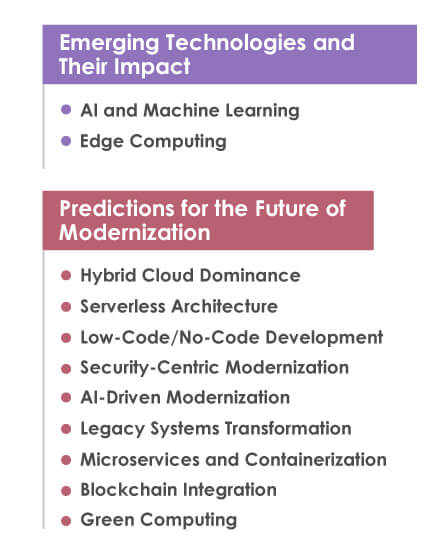
As technology continues to evolve at a rapid pace, the landscape of application modernization is set to undergo transformative changes. Here, we delve into some future trends and predictions that are likely to shape the world of modernization in the coming years:
1. Emerging Technologies and Their Impact:
AI and Machine Learning:
AI-driven automation will play an increasingly vital role in modernization. AI can optimize code refactoring, enhance testing automation, and enable predictive maintenance.
Quantum Computing:
In the long term, quantum computing may revolutionize the way applications are designed and executed, leading to quantum-ready applications.
Edge Computing:
As the Internet of Things (IoT) grows, edge computing will gain prominence in modernization efforts, enabling real-time data processing at the edge of networks.
2. Predictions for the Future of Modernization:
Hybrid Cloud Dominance:
Hybrid cloud environments will become the standard, with businesses leveraging a mix of public and private clouds for flexibility and scalability.
Serverless Architecture:
Serverless computing will continue to gain traction, enabling developers to focus solely on code while the cloud provider manages infrastructure, reducing operational overhead.
Low-Code/No-Code Development:
The rise of low-code/no-code platforms will democratize application development, allowing business users to create applications without deep coding expertise.
Security-Centric Modernization:
Security will be at the forefront of modernization efforts, with organizations prioritizing secure coding practices, continuous security testing, and proactive threat detection.
AI-Driven Modernization:
AI will play a pivotal role in modernization, from automating code refactoring to enhancing user experience through predictive analytics.
Legacy Systems Transformation:
Organizations will continue to grapple with legacy systems, driving increased efforts to modernize or replace them to meet evolving business needs.
Microservices and Containerization:
The adoption of microservices architecture and containerization will remain prevalent, enabling agility and scalability in application development.
Blockchain Integration:
Blockchain technology will find applications beyond cryptocurrencies, with integration into supply chains, identity management, and more.
Green Computing:
Sustainability will become a significant consideration in modernization, with a focus on energy-efficient computing and reduced carbon footprints.
How Testing Plays its Role in App Modernization?

Testing plays a crucial role in application modernization by acting as the vanguard of quality assurance throughout the transformation process. As legacy applications are refactored, rearchitected, or rebuilt to meet contemporary standards, thorough testing validates that the modifications align with the intended objectives. It ensures that the modernized application not only retains its core functionality but also functions reliably in the new environment. By identifying and rectifying defects, vulnerabilities, or performance bottlenecks early in the process, testing mitigates risks and ensures a smooth transition to the modernized system.
Moreover, testing in app modernization extends beyond traditional functional testing. It encompasses various facets, including compatibility testing to ensure seamless integration with other systems, security testing to safeguard sensitive data, and performance testing to guarantee optimal responsiveness. User experience testing ensures that the modernized application is intuitive and user-friendly. In essence, testing serves as the safeguard against potential setbacks, ensuring that the modernized application aligns with business objectives, complies with industry standards, and delivers an enhanced user experience.
Conclusion
In conclusion, application modernization stands as the compass guiding organizations through the ever-evolving terrain of technology. It represents not just a technological upgrade but a strategic imperative, allowing businesses to adapt, innovate, and thrive in the digital age. By choosing the right modernization approach, leveraging cutting-edge technologies, and prioritizing testing, organizations can ensure their applications remain robust, secure, and agile. Moreover, the journey toward modernization is not solely about technology; it encompasses people, culture, and processes. As technology continues to evolve, embracing modernization is not just an option but a means of futureproofing, enabling organizations to navigate change, seize opportunities, and deliver exceptional value to their customers in an increasingly digital world. It’s a journey that transcends the present, shaping the future of enterprises and their ability to excel in the ever-competitive global landscape.
Discover more
Get in Touch
Stay Updated
Subscribe for more info


